Formal gardens have long been a symbol of elegance and timeless beauty, offering a harmonious blend of structure and nature. Rooted in centuries-old traditions, these gardens are designed to evoke a sense of order and sophistication, making them a perfect choice for those who appreciate refined aesthetics. From the meticulous symmetry of pathways to the artistry of topiary sculptures, formal gardens are a testament to the enduring appeal of classic design. Whether you’re looking to transform a sprawling estate or a modest backyard, incorporating elements like central fountains, boxwood hedges, or geometric parterres can elevate your outdoor space into a serene retreat. Let’s explore 25 formal garden ideas that combine elegance and timelessness to inspire your next landscaping project.

1. Symmetrical Pathways
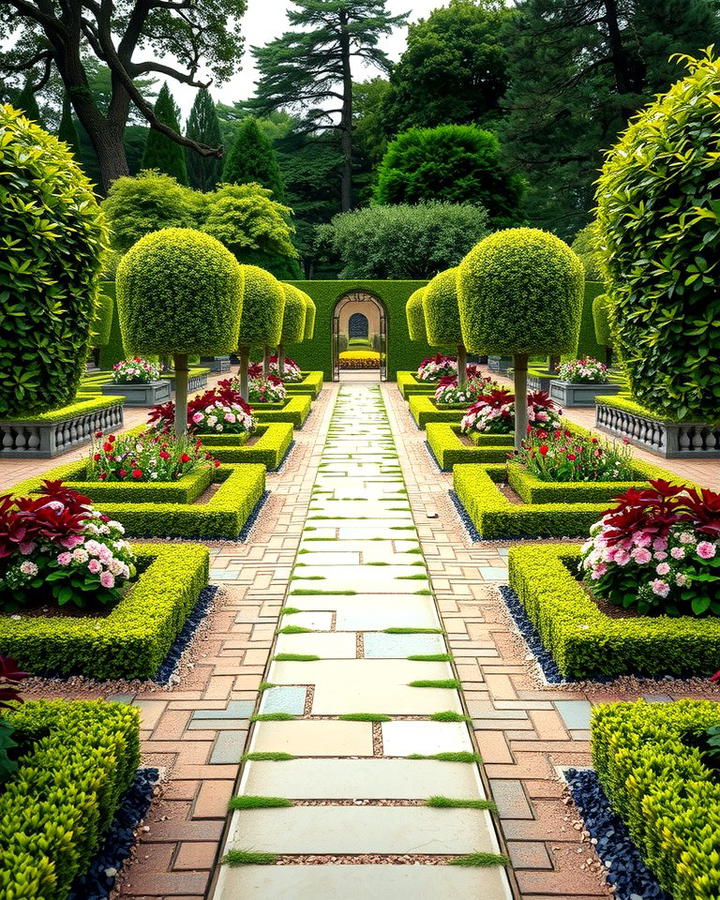
In a formal garden, symmetrical pathways offer a sense of order and balance. These pathways, often framed with hedges or flower beds, guide visitors through the space while creating an elegant visual rhythm. Whether paved with bricks, stones, or gravel, they emphasize meticulous design and geometry. A well-planned pathway also serves as a functional feature, preventing foot traffic from damaging delicate plants. Ultimately, symmetrical pathways transform your garden into a structured retreat that feels both sophisticated and serene.
2. Topiary Sculptures
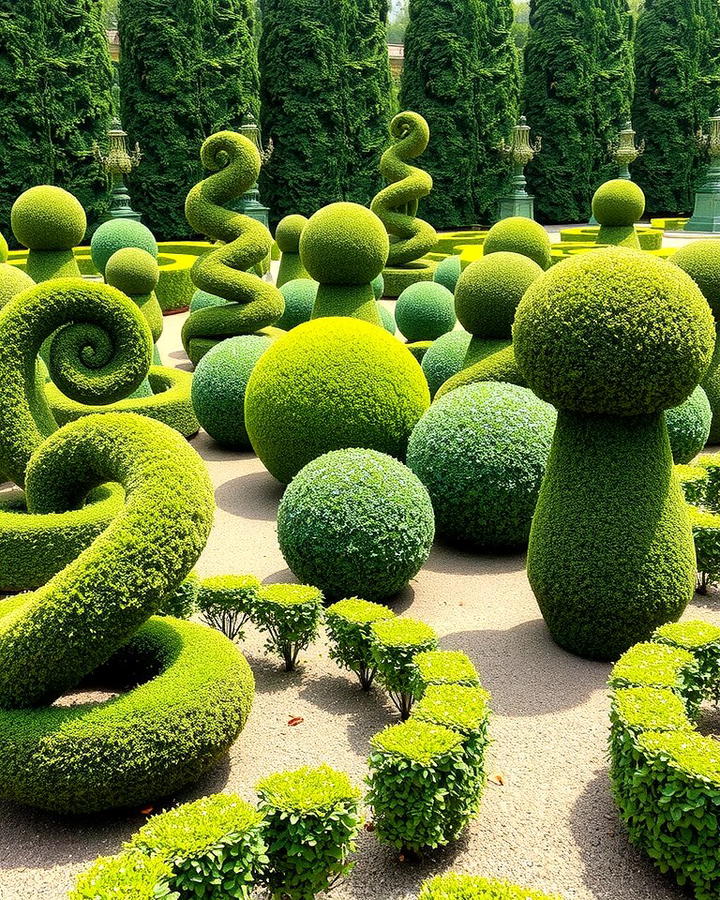
With their striking shapes, topiary sculptures add an artistic flair to any formal garden. These sculpted shrubs or trees can take on classic forms like spirals, spheres, or animals, showcasing the gardener’s creativity. Besides being visually captivating, topiaries create focal points that draw attention and elevate the overall design. When positioned strategically, they can also enhance the symmetry and layering of the garden. Whether simple or elaborate, topiary sculptures exude timeless charm and craftsmanship.
3. Boxwood Hedges
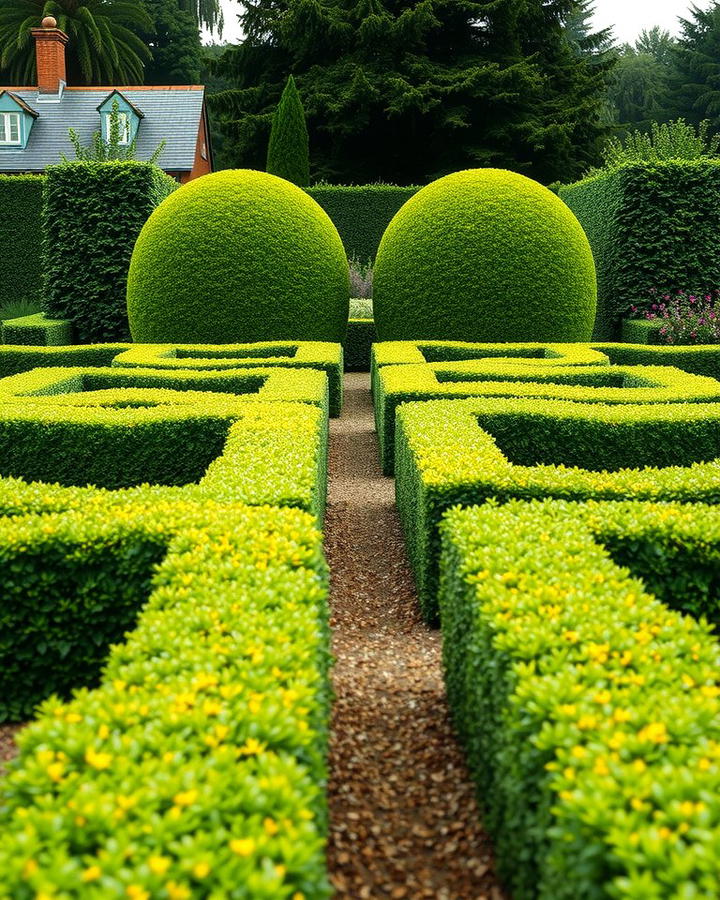
Boxwood hedges are a cornerstone of formal garden design, offering structure and definition. Their dense, evergreen foliage is perfect for creating clean lines, borders, or enclosed spaces. Additionally, they are highly versatile—ideal for framing pathways, outlining flower beds, or forming intricate shapes in parterres. Boxwood hedges require regular trimming to maintain their polished appearance, but their enduring beauty and adaptability make them a worthwhile feature. They provide a lush, green backdrop that enhances other garden elements.
4. Central Fountains
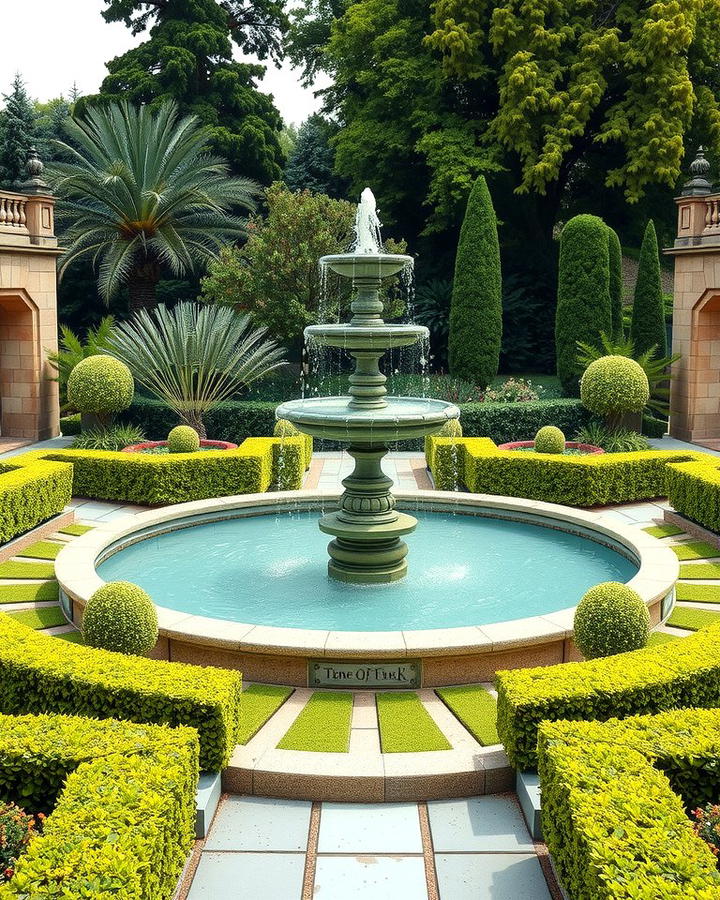
A central fountain serves as a stunning focal point in formal gardens, combining beauty with the soothing sound of water. Positioned at the heart of the layout, it draws the eye and anchors surrounding elements. Fountains come in various styles, from classical tiered designs to modern geometric shapes, accommodating diverse aesthetic preferences. Beyond their visual appeal, they provide a cooling effect and attract birds, adding life to the garden. Their timeless elegance makes them a must-have for formal landscapes.
5. Symmetrical Flower Beds
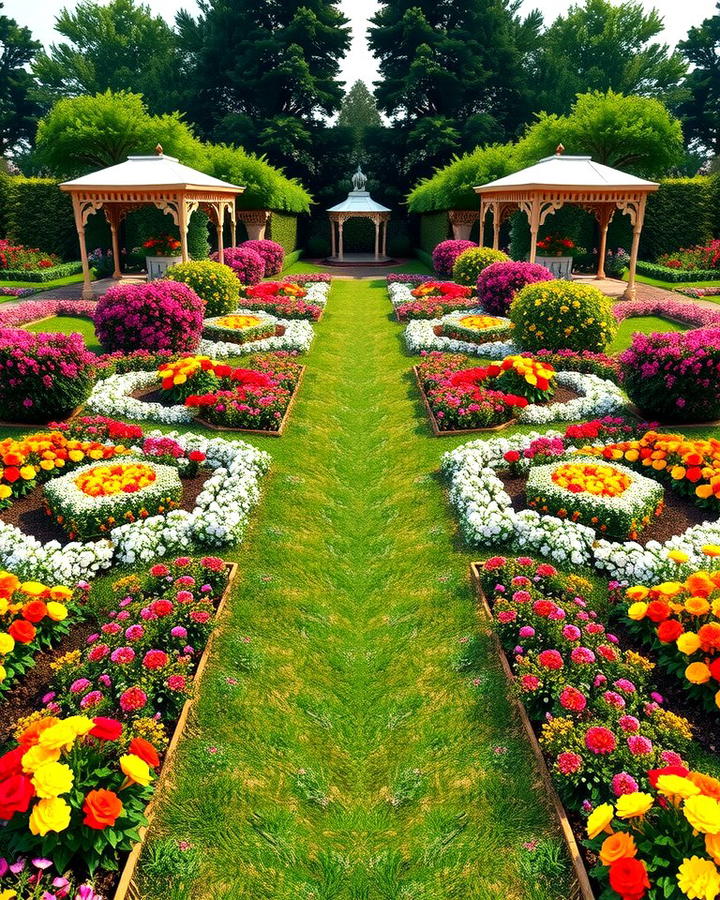
Symmetrical flower beds bring color and harmony to formal gardens. By mirroring plant arrangements on either side of a path or central feature, they create a balanced and pleasing aesthetic. Using seasonal flowers allows for a dynamic display that changes throughout the year while maintaining the structured look. Furthermore, incorporating contrasting colors and textures can add depth and visual interest. These flower beds are not only visually stunning but also provide an opportunity to showcase horticultural skill.
6. Pergola Walkways
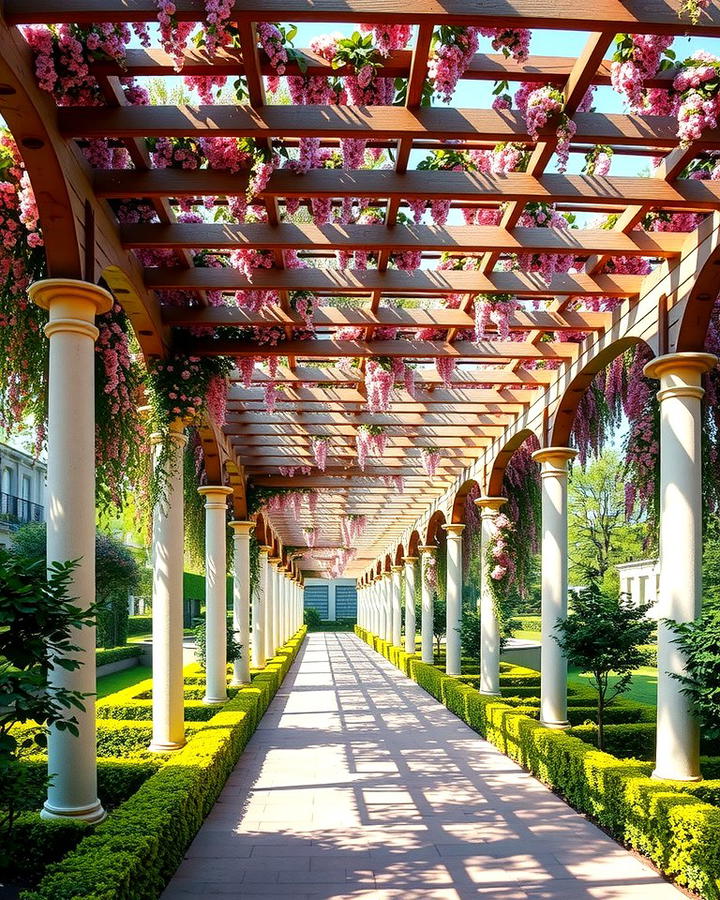
Pergola walkways introduce both shade and architectural beauty to formal gardens. These structures, often adorned with climbing plants like roses or wisteria, create a picturesque canopy that enhances the garden’s ambiance. In addition to their aesthetic appeal, pergolas guide visitors through the space, offering a sense of journey and exploration. Their timeless design complements various garden styles while adding height and dimension. Whether used as a feature or a functional walkway, pergolas elevate the garden experience.
7. Reflecting Pools
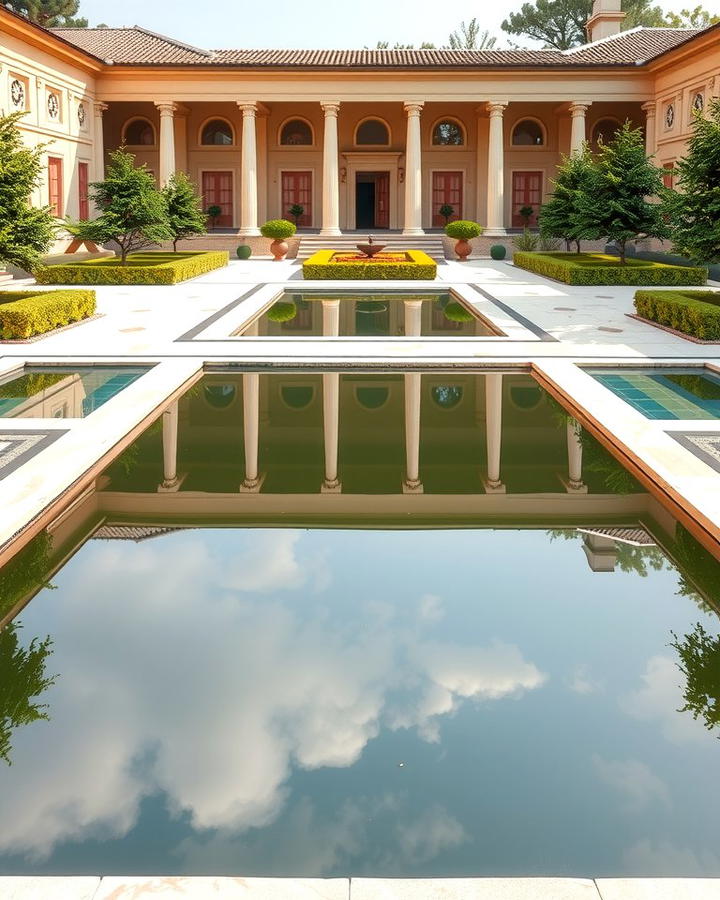
Reflecting pools offer a serene and elegant element to formal gardens. Their still, mirror-like surface reflects the surrounding plants, architecture, and sky, doubling the visual impact. Positioned strategically, they enhance symmetry and create a sense of depth in the garden. Reflecting pools also encourage calmness and contemplation, making them ideal for relaxation. By adding carefully curated sculptures or aquatic plants, you can further personalize this feature. These pools harmonize beauty and tranquility in any outdoor space.
8. Gravel Courtyards
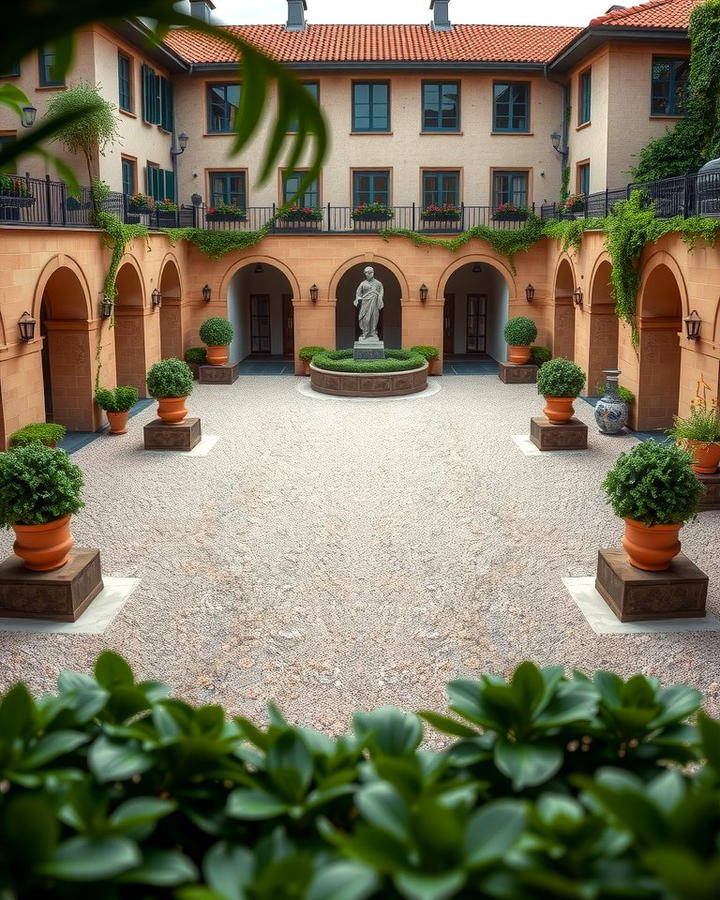
Gravel courtyards provide a practical yet refined addition to formal gardens. Composed of fine stones, they offer a clean and uniform look that complements the structured design. Besides being low-maintenance, gravel is permeable, allowing water to drain efficiently and preventing puddles. These courtyards are often paired with symmetrical seating arrangements, planters, or statues to enhance their aesthetic appeal. Whether used as an entrance or central gathering area, gravel courtyards add both functionality and elegance.
9. Geometric Parterres
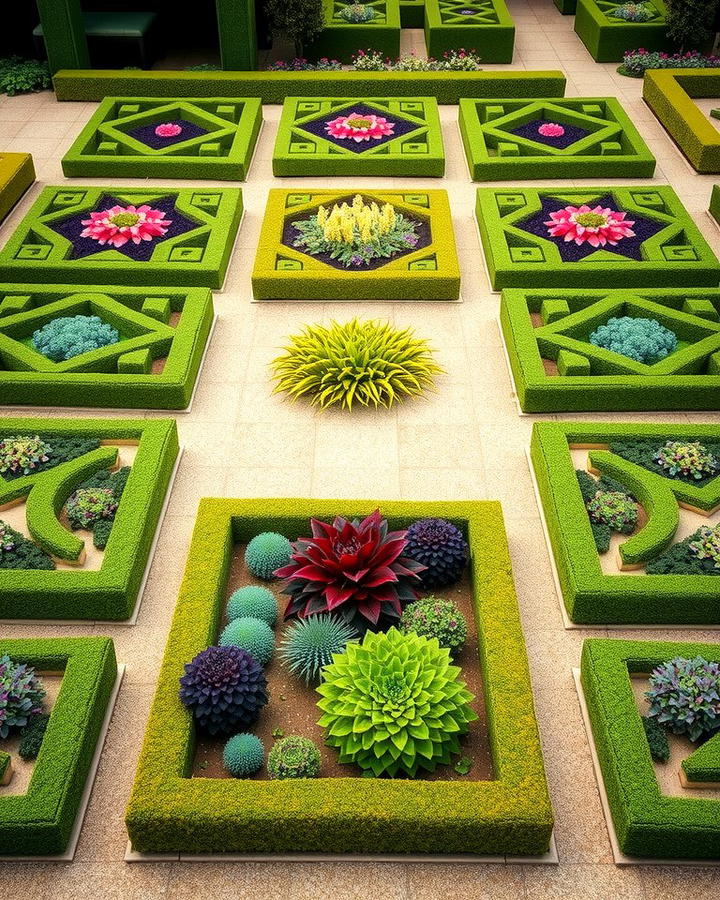
Geometric parterres define the essence of formal garden design, offering intricate patterns of hedges, flowers, or gravel. These symmetrical layouts are often framed with low hedges and feature colorful plants arranged in precise shapes. Parterres not only showcase the gardener’s attention to detail but also provide a stunning visual centerpiece. By combining contrasting textures and colors, they create a dynamic yet cohesive look. These ornate designs elevate the garden’s sophistication, making them a timeless choice for formal landscapes.
10. Stone Benches
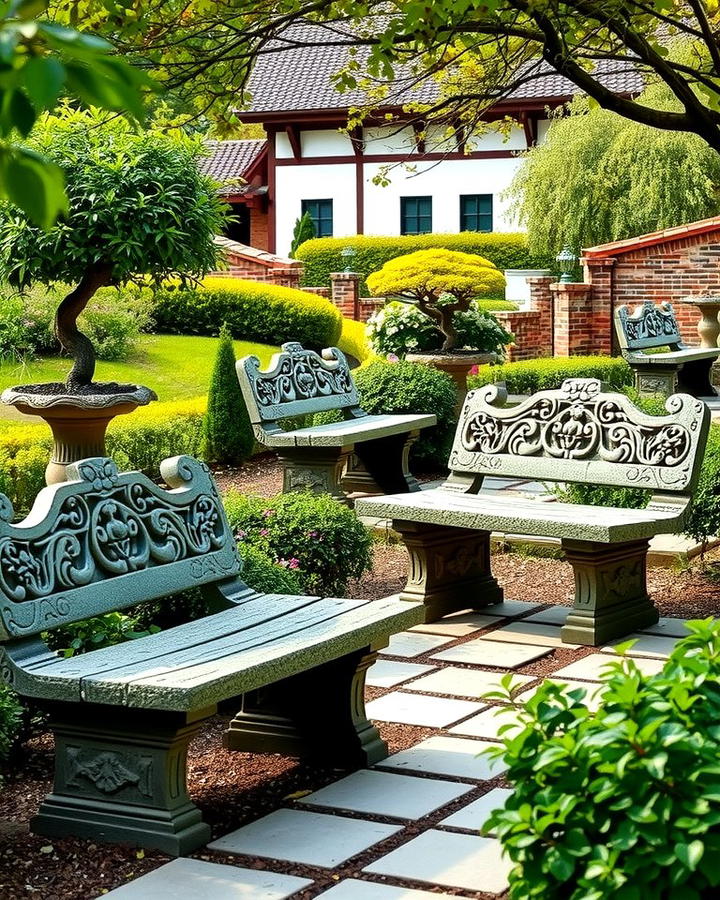
Stone benches merge functionality with charm in formal gardens. Their sturdy and timeless design provides seating while blending seamlessly with natural surroundings. Placed along pathways or near focal points like fountains, they encourage visitors to pause and appreciate the garden’s beauty. Additionally, stone benches require minimal maintenance and withstand various weather conditions, ensuring longevity. Whether simple or intricately carved, they add a touch of elegance and invite moments of reflection within the structured landscape.
11. Sculptural Accents
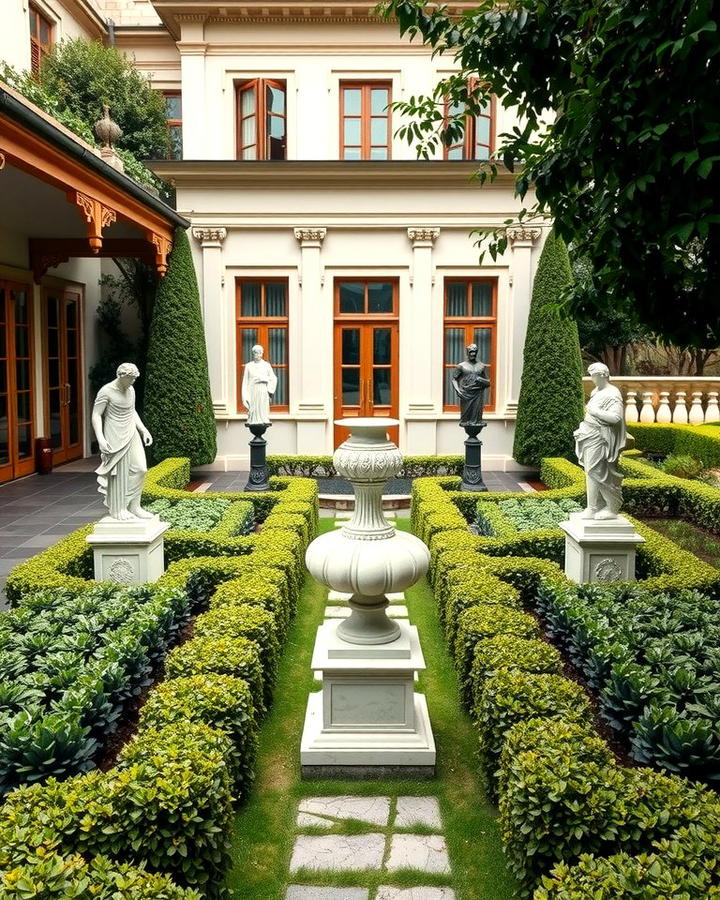
Sculptural accents introduce artistry and personality to formal gardens. From classical statues to modern pieces, these elements serve as focal points that enhance the garden’s visual appeal. Placed strategically within symmetrical layouts, sculptures add depth and interest while complementing the structured design. Materials like marble, bronze, or stone ensure durability and timeless beauty. Sculptural accents also reflect the garden owner’s taste, making the space uniquely personal. They provide both aesthetic and cultural richness to the landscape.
12. Trellis Walls
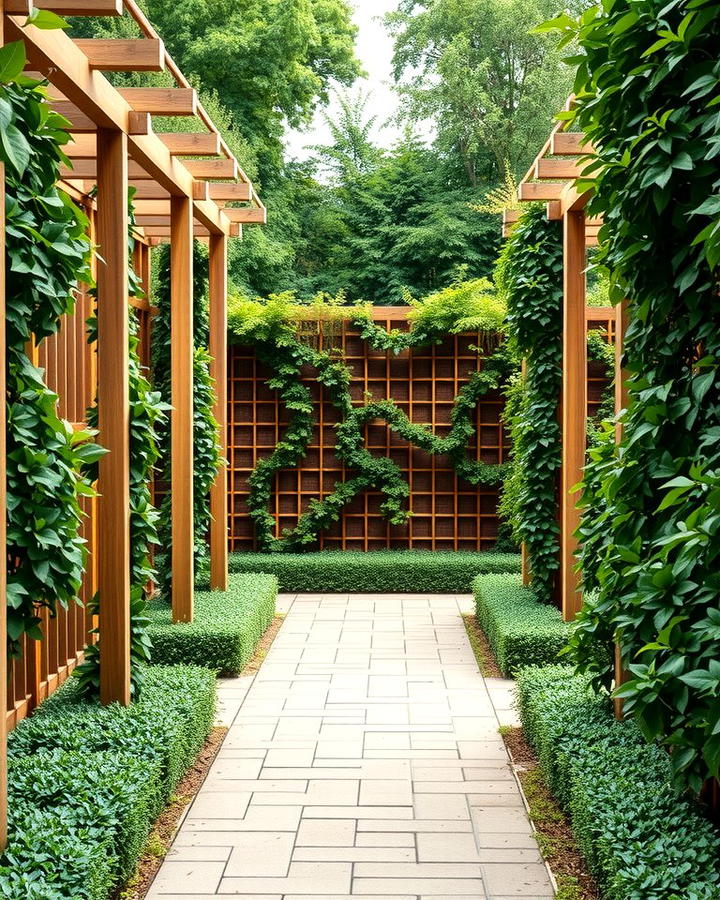
Trellis walls combine functionality with visual charm in formal gardens. Often made from wood or metal, these structures support climbing plants such as ivy, roses, or jasmine, adding vertical greenery. Besides enhancing the garden’s texture and depth, trellis walls can also serve as natural dividers, creating distinct sections. Their symmetrical placement maintains the formal aesthetic while offering practical benefits like privacy or shade. Trellis walls are an elegant way to integrate both nature and structure into the garden.
13. Ornamental Gates
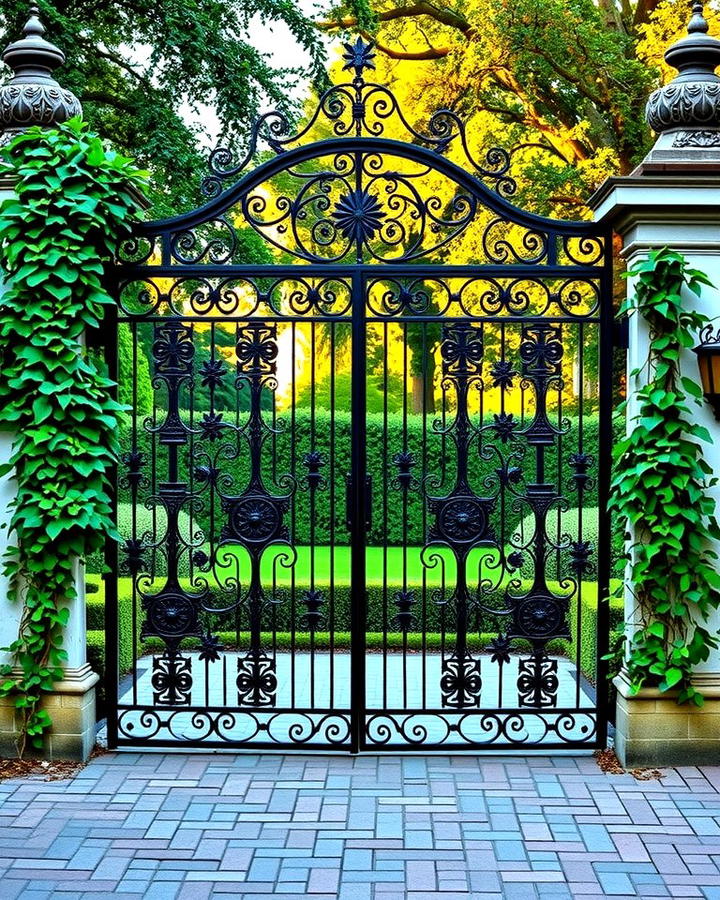
Ornamental gates provide a grand entrance to formal gardens, blending security with style. Made from wrought iron or other durable materials, these gates often feature intricate patterns or motifs that reflect the garden’s theme. Positioned at entryways or within pathways, they create a sense of transition and anticipation. Beyond their aesthetic value, ornamental gates also define boundaries and protect the garden from unwanted visitors. Their combination of beauty and functionality makes them a standout feature in formal landscapes.
14. Seasonal Plantings
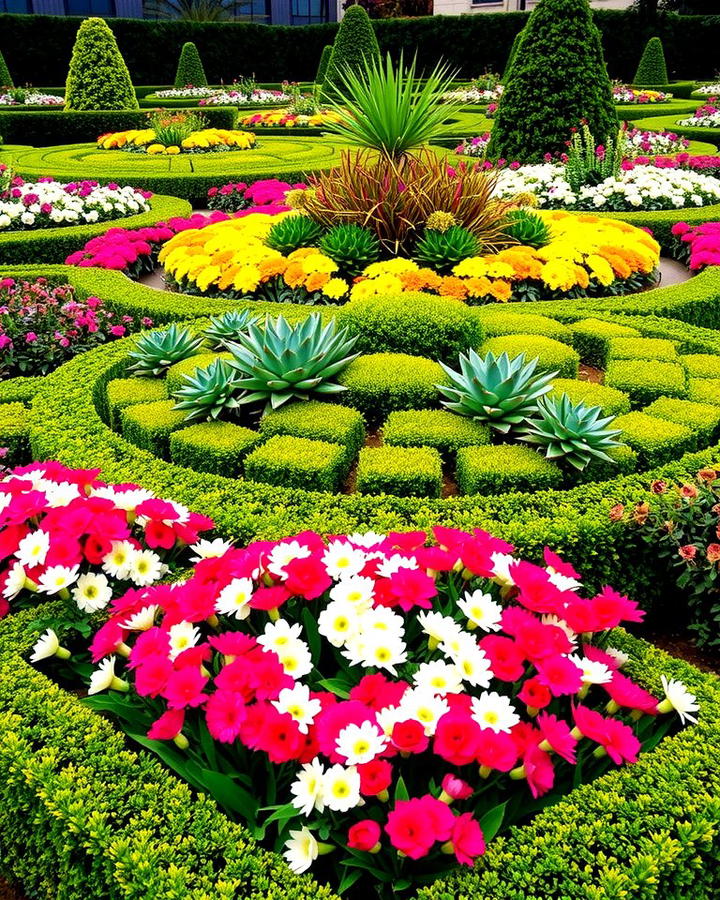
Seasonal plantings add vibrancy and variety to formal gardens throughout the year. By selecting plants that bloom in different seasons, you can ensure a continuous display of color and texture. These arrangements are often organized symmetrically to maintain the garden’s structured appearance. Seasonal plantings also allow for creativity, as you can experiment with different combinations of flowers, foliage, and colors. This dynamic approach keeps the garden visually engaging while celebrating the changing seasons.
15. Classic Arbors

Classic arbors offer a touch of romance and elegance to formal gardens. These arching structures, often adorned with climbing plants, create enchanting entryways or focal points. Positioned along pathways or at transitions, they guide visitors while enhancing the garden’s vertical dimension. Arbors also provide shade and a sense of intimacy, making them ideal for quiet moments of reflection. Crafted from wood or metal, their timeless design complements various garden styles, blending functionality with aesthetic charm.
16. Symmetrical Garden Layouts
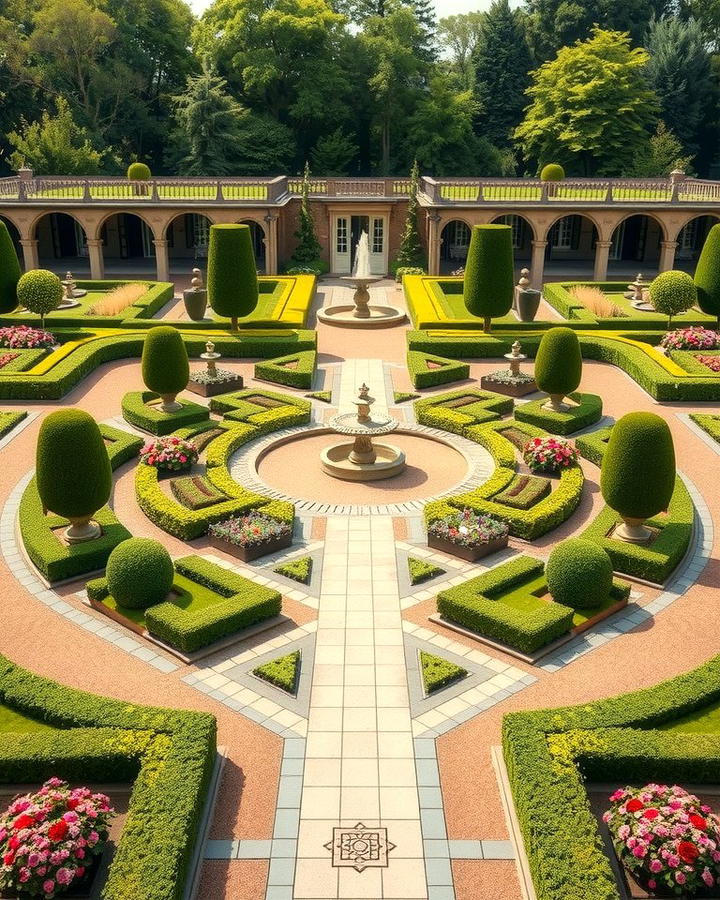
With precise balance and harmony, symmetrical garden layouts evoke a sense of timeless elegance. This design relies on mirrored planting patterns, pathways, and features, creating a visually balanced space. Symmetry enhances the formal appeal of gardens by guiding the eye evenly, fostering a sense of order. In addition, these layouts are ideal for showcasing central focal points like statues or fountains. Whether large or small, symmetrical designs work well in formal gardens, offering a structured yet tranquil outdoor retreat.
17. Boxwood Parterres
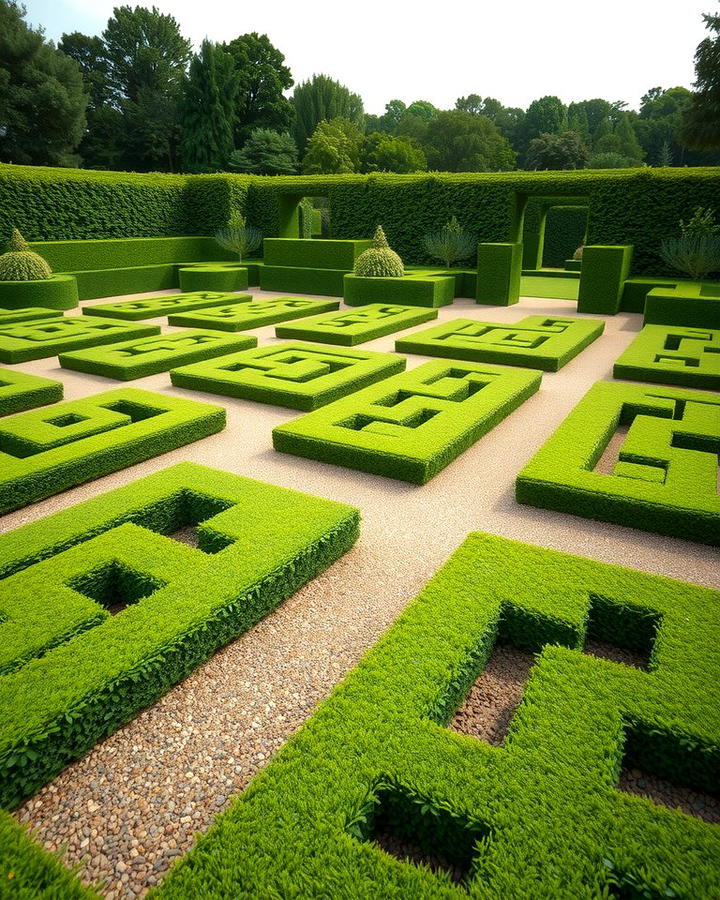
Boxwood parterres are the hallmark of classic formal gardens, featuring low, trimmed hedges arranged in intricate patterns. These geometric designs define sections of the garden, creating distinct areas for flowers, gravel, or decorative elements. Besides their aesthetic charm, parterres bring practicality by maintaining neatness and structure year-round. Moreover, they can be customized to fit any space, from grand estates to small courtyards, making them versatile for different garden sizes and styles.
18. Stone Pathways
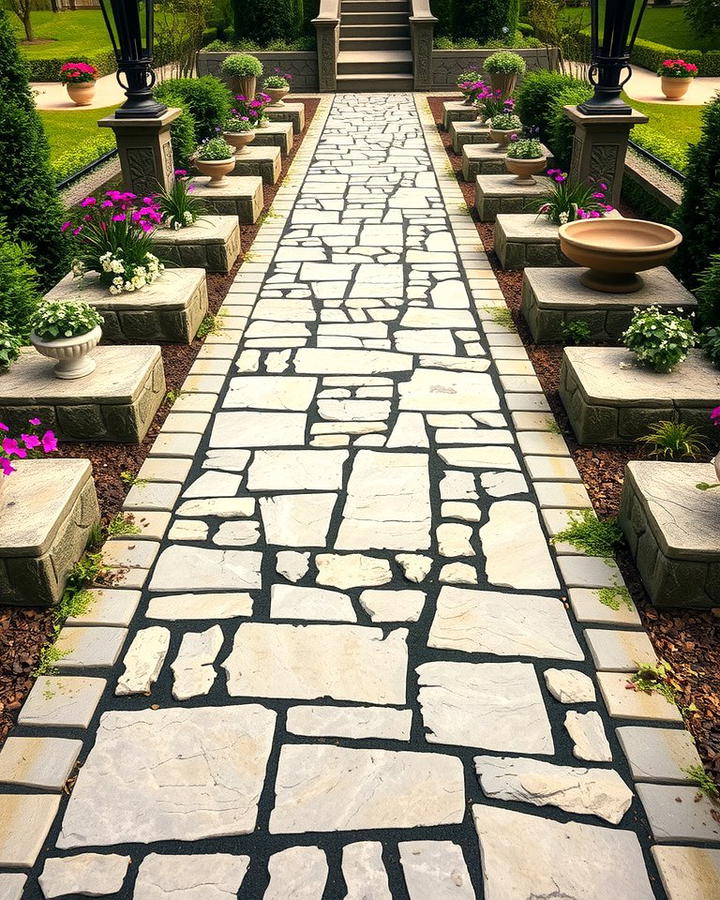
Stone pathways provide both functionality and sophistication to formal gardens. With materials like flagstone, slate, or cobblestone, these paths offer durability and timeless charm. Beyond their practical use for navigation, stone pathways help frame the garden’s layout, connecting various sections seamlessly. When paired with lush greenery or vibrant flowerbeds, the contrast enhances the overall visual appeal. Furthermore, their low maintenance needs make them a long-lasting addition to any formal garden.
19. Decorative Water Features
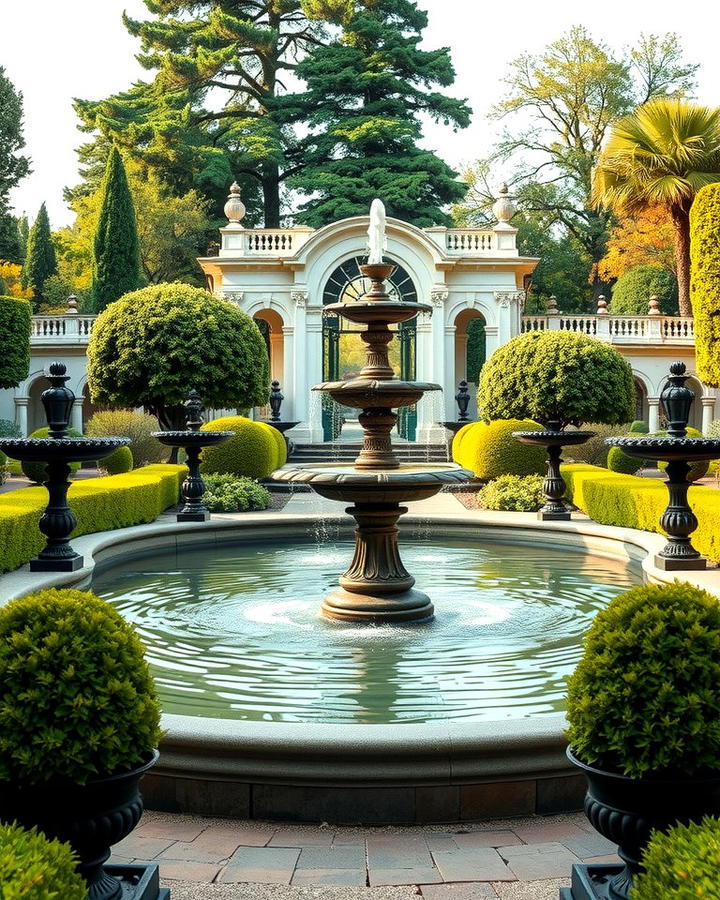
A garden becomes a soothing sanctuary with the addition of decorative water features like fountains, ponds, or tiered waterfalls. These elements introduce movement and a calming ambiance through the sound of flowing water. Water features can act as striking focal points, drawing attention to specific areas within the garden. Additionally, their reflective surface adds depth and elegance, making them an essential component of formal garden designs.
20. Topiary Sculptures
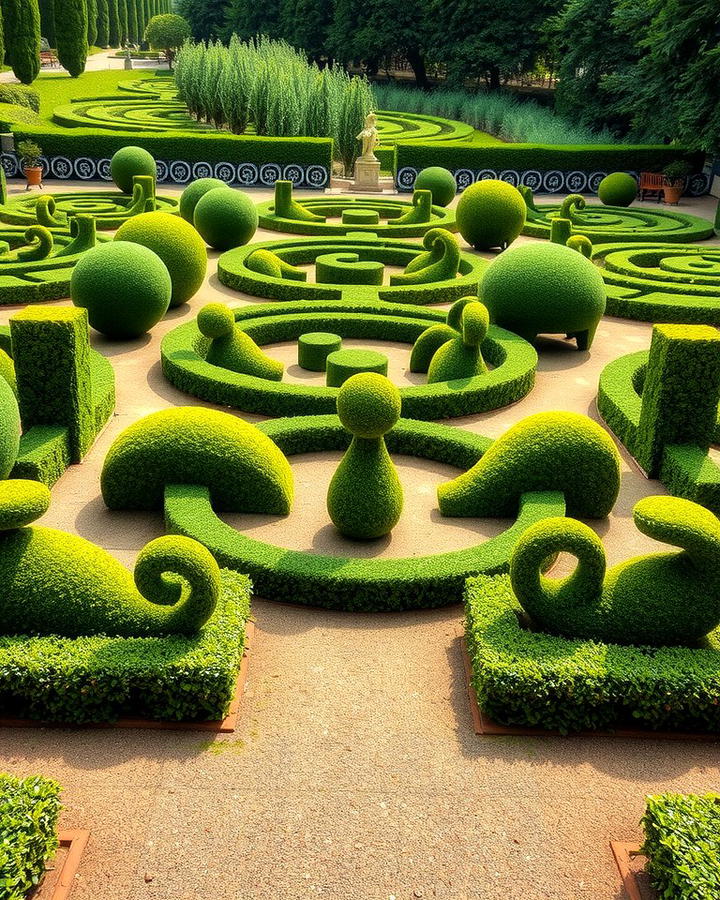
Topiary sculptures transform living plants into stunning works of art, adding a whimsical yet refined touch to formal gardens. From simple shapes like spheres and cones to intricate animal or abstract designs, they showcase creativity and precision. These sculptures not only serve as eye-catching focal points but also highlight the garden’s structured layout. Regular trimming ensures their crisp appearance, making them a long-lasting feature that elevates the garden’s elegance.
21. Gravel Courtyards
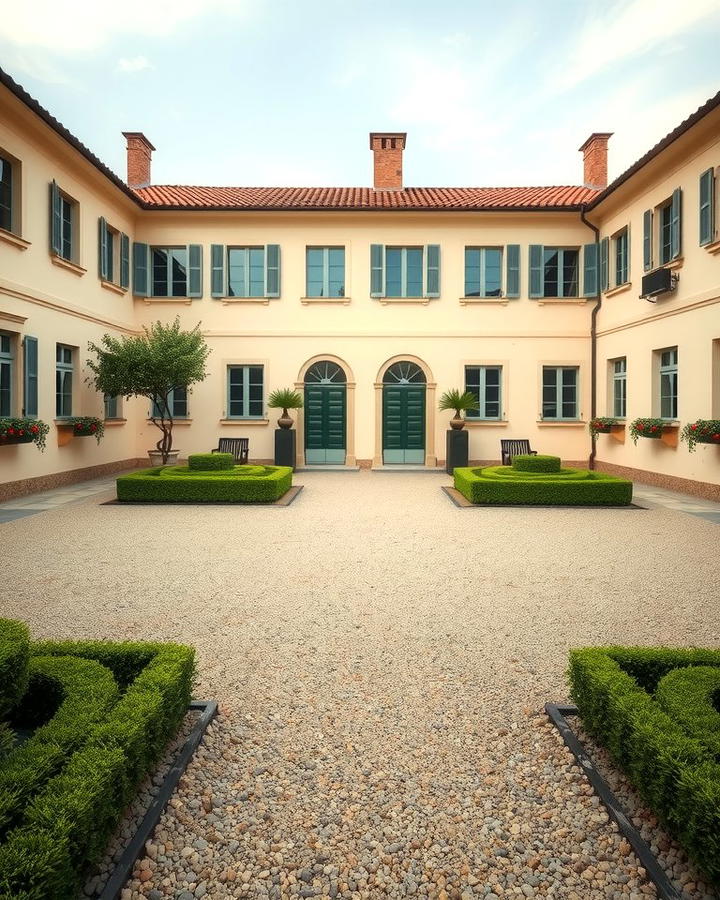
Gravel courtyards bring a European-inspired charm to formal gardens. Featuring clean lines and a minimalist aesthetic, these spaces are ideal for creating seating areas or open zones. Gravel is a cost-effective and low-maintenance material that complements both modern and classic designs. Additionally, its neutral tones pair well with vibrant plants and ornate garden features, creating a balanced and serene environment. Perfect for entertaining or relaxing, gravel courtyards add sophistication to outdoor spaces.
22. Ornate Iron Gates
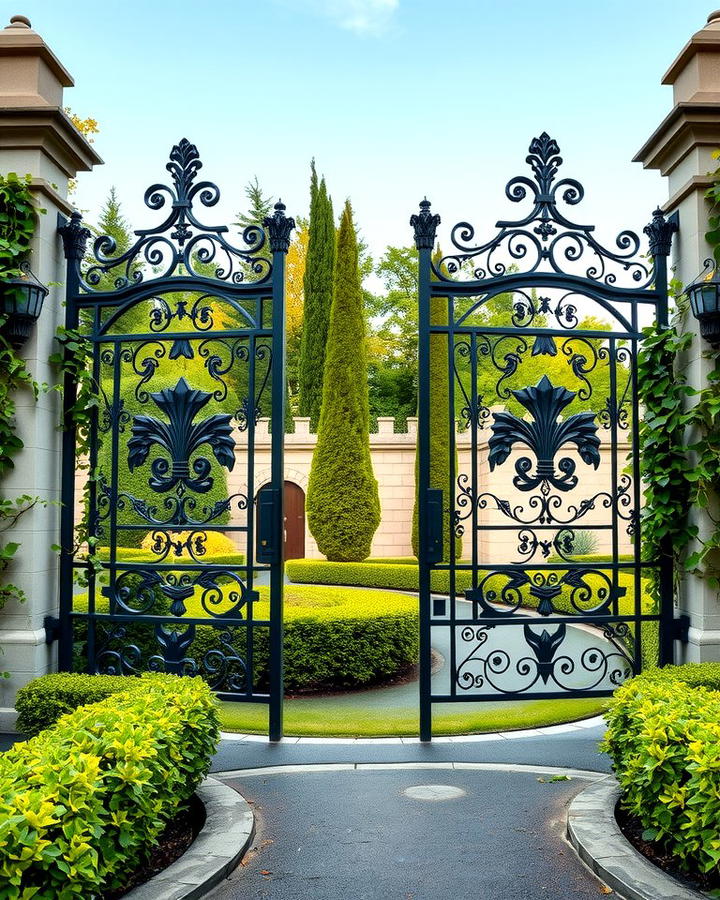
Ornate iron gates set the tone for formal gardens, serving as grand entrances or internal dividers. Their intricate designs add artistic flair while offering functionality and security. Positioned strategically, these gates frame the view, drawing attention to specific areas or features. Furthermore, they pair beautifully with climbing plants like ivy or roses, enhancing their decorative appeal. Durable and timeless, iron gates are an investment that complements the elegance of any formal garden.
23. Seasonal Flowerbeds
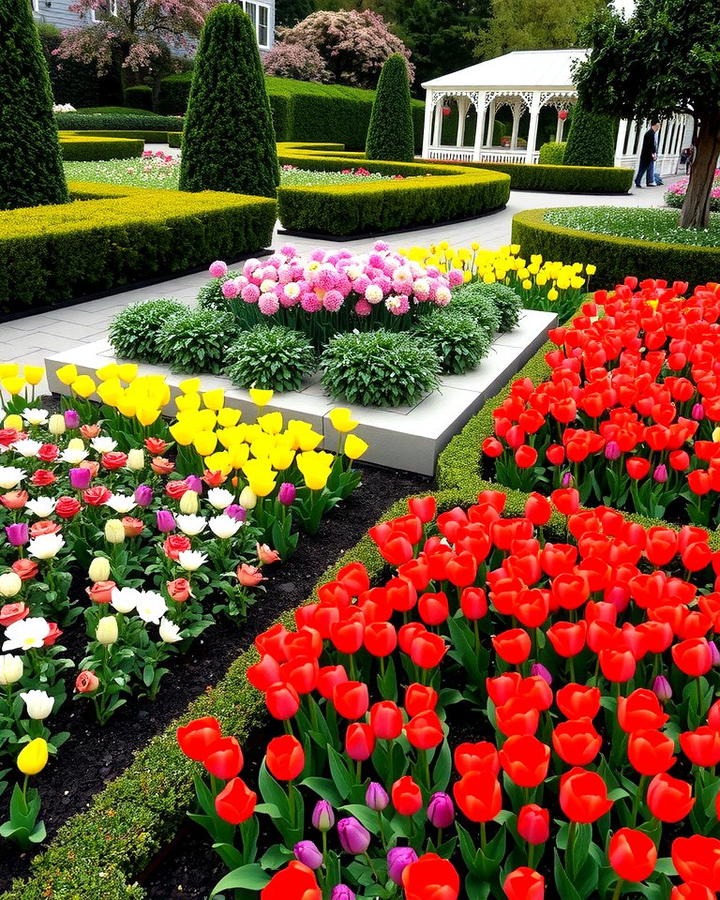
Seasonal flowerbeds keep formal gardens vibrant year-round by showcasing blooms that thrive in different seasons. Carefully planned rotations ensure continuous color and interest, from spring tulips to autumn chrysanthemums. These flowerbeds add a dynamic element to the garden, contrasting beautifully with evergreen hedges and structures. Additionally, they offer flexibility, allowing gardeners to experiment with new color palettes or varieties. Seasonal flowerbeds enhance the garden’s appeal, making it a lively and ever-changing space.
24. Pergolas with Vines
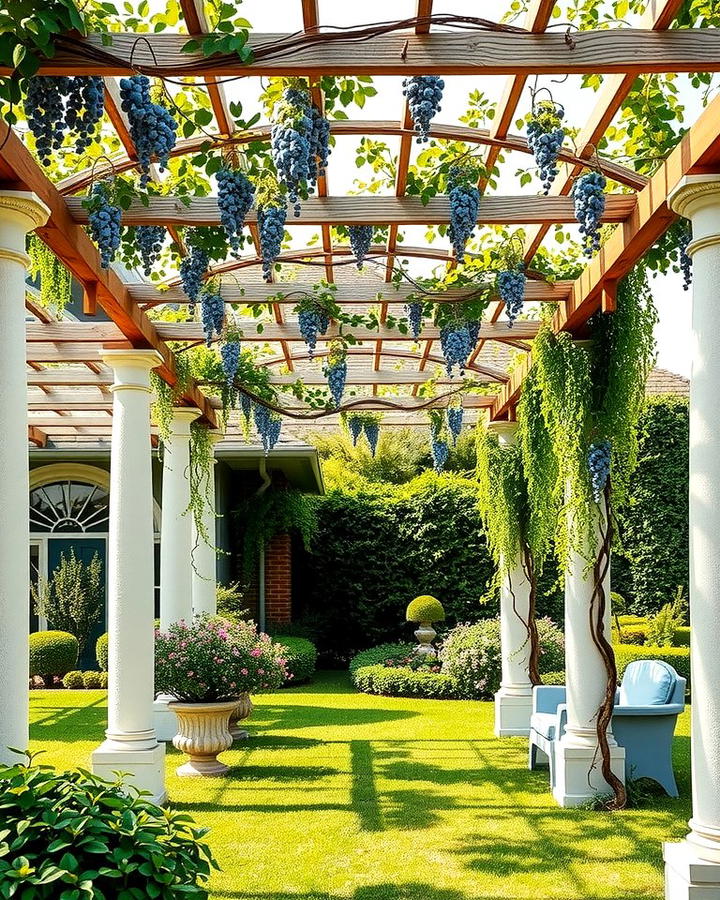
Pergolas with vines create shaded walkways or seating areas that blend structure with natural beauty. Covered in climbing plants like wisteria, clematis, or grapevines, these structures add vertical greenery and fragrance to formal gardens. Beyond their visual charm, pergolas provide functional benefits like shade and privacy. Positioned strategically, they frame views or act as transitions between different garden zones. With proper maintenance, pergolas remain a long-lasting feature that enhances the garden’s elegance and usability.
25. Formal Garden Statues
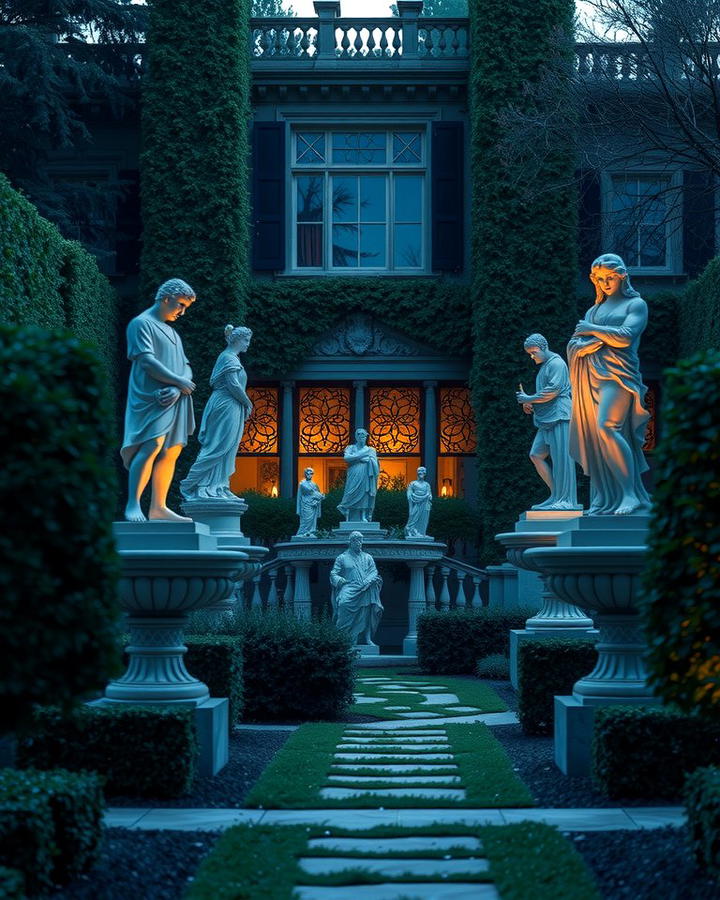
Formal garden statues bring artistic and cultural elements to outdoor spaces, serving as timeless focal points. From classical figures to modern sculptures, these additions reflect personal taste and elevate the garden’s aesthetic. Placed strategically, statues enhance symmetry and guide the viewer’s eye through the landscape. In addition to their decorative role, they create a sense of permanence and history, making the garden feel unique and sophisticated. Proper lighting further highlights their beauty, especially during evenings.
Conclusion
Creating a formal garden is more than just landscaping—it’s crafting a masterpiece that stands the test of time. By incorporating elements like symmetrical pathways, reflecting pools, and ornamental gates, you can design a space that exudes sophistication and tranquility. Whether you’re drawn to the structured beauty of boxwood parterres or the charm of pergolas adorned with climbing vines, these 25 ideas offer endless inspiration to bring elegance to your outdoor sanctuary. Embrace the timeless allure of formal gardens and let your creativity flourish as you transform your space into a haven of refined beauty.
